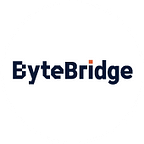Summary of the Operation of China’s Industrial Robot Industry in 2021 and Industry Trend Forecast in 2022
It is expected that the process of localization of industrial robots will accelerate in 2022, and the integration of industrial robots will be the key point of technological breakthroughs.
1. Review of the Industrial Robot Industry
1 Increased Robot Density
The continuous improvement of the cost performance of industrial robots and the shortening of the investment recovery period have promoted the increase of the density of industrial robots. In the last five years, China has been the main driving market for the growth of global robot density. In 2015, the density of robots was 49 units/10,000 people, and in 2020, it increased to 246 units/10,000 people, and the ranking rose from 25th to 9th. According to the “14th Five-Year Plan” for the Development of the Robot Industry, the average annual growth rate of the robot industry will exceed 20% by 2025, and the density of manufacturing robots will increase by 100%, that is, 450 units per 10,000 people.
2 Industrial Robot Production Increased
In recent years, China’s industrial robot output continues to raise. In 2020, it surpassed 200,000 sets and reached 237,100 sets, a year-on-year growth of 19.1%. With the advent of the post-epidemic era, China’s industrial economy has shown strong resilience and vitality to cope with complex and severe situations. Industrial robots have also risen against the trend with outstanding performance. From January to November 2021, China produced 330,100 sets of industrial robots, up 49.0 percent year-on-year.
3 Industrial Robot Sales Grow
China has become the world’s largest consumer of industrial robots for eight consecutive years, and the sales of industrial robots have shown an increasing trend. As China quickly brought the epidemic under control, many industries experienced a blowout in the second half of 2020, and the demand for industrial robots has grown sharply. In 2020, the market size of industrial robots is 42.25 billion yuan, a year-on-year increase of 18.9%. In 2021, the scale of China’s industrial robot market will reach 44.57 billion yuan. By 2023, the domestic market will further expand, and it is projected to surpass 58.9 billion yuan.
4 Industrial Robot Investment and Financing Are Active
Since 2018, China’s industrial robot investment and financing events have decreased, the capital market has gradually become more rational, and financing has increasingly concentrated on some advantageous enterprises. In 2020, there were 68 industrial robot investment and financing events, with an amount of 13.289 billion yuan. In 2021, investment and financing in the industrial robots field heated up, with 96 investment and financing events, and a financing amount of 23.655 billion yuan.
2. 2022 Industrial Robot Industry Forecast
1 Speed Up the Process of Localization and Independence
In recent years, we have focused on breaking through key technical difficulties and successively overcome the common problems of “stuck neck” in the fields of reducers, controllers, servo motors, and other core components. At present, enterprises are increasing investment in research and development, and it is expected that China’s localization process will accelerate in 2022.
2 Industrial Robots Integration Is The Key Point Of Technological Breakthrough
Currently, China’s industrial robots mainly perform deterministic tasks in a structured environment. They are not flexible enough to work in complex dynamic environments, primarily because industrial robots have a weak perception in integrating with the environment and collaborating with other robots. With the development of traditional industrial robots in machine vision, intelligent sensing, and cloud technology, the future industrial robots will be more intelligent and flexible, optimized from traditional robots to integrated ones.
High-quality Training Data Is Helping Artificial Intelligence Break New Barriers
At present, the demand for the highest quality AI training data in various industries is urgent. AI is implemented in various fields, such as education, law, intelligent driving, banking, and finance, etc. Each field has requirements for subdivision and specialization.
Among them, in particular, traditional enterprises with intelligent transformation and technology enterprises need the assistance of training data service providers with rich project experience to help sort out the data labeling instruction and to obtain more suitable data. The use of high-quality data in special scenarios reduces the research and development cycle, accelerates the implementation process, and helps enterprises to make faster and better intelligent transformations.
In the process of in-depth industrial landing, there is still a gap between artificial intelligence technology and enterprise needs. The core goal of enterprise users is to use artificial intelligence technology to achieve business growth. Actually, artificial intelligence technology itself cannot directly solve all the business needs. It needs to create products and services that can be implemented on a large scale based on specific business scenarios and goals.
What we need to be clear is for AI companies and the entire industry, data annotation is an important part of the realization of artificial intelligence. The accuracy and efficiency of the labeled data affect the final result of the artificial intelligence algorithm model.
End
Outsource your data labeling tasks to ByteBridge, you can get the high-quality ML training datasets cheaper and faster!
- Free Trial Without Credit Card: you can get your sample result in a fast turnaround, check the output, and give feedback directly to our project manager.
- 100% Human Validated
- Transparent & Standard Pricing: clear pricing is available(labor cost included)
Why not have a try?
source:https://www.robot-china.com/news/202201/14/69474.html
